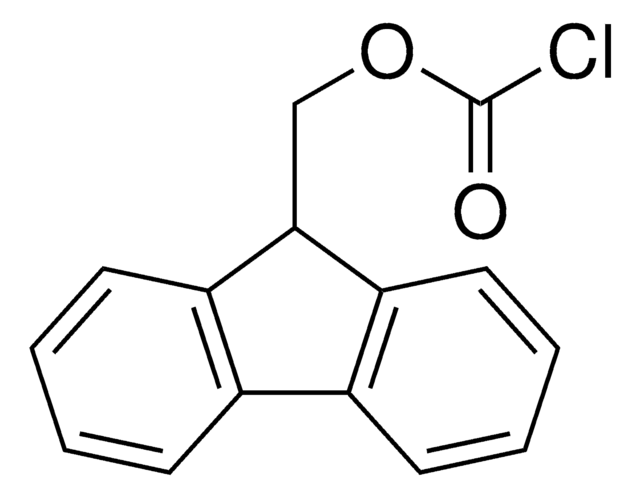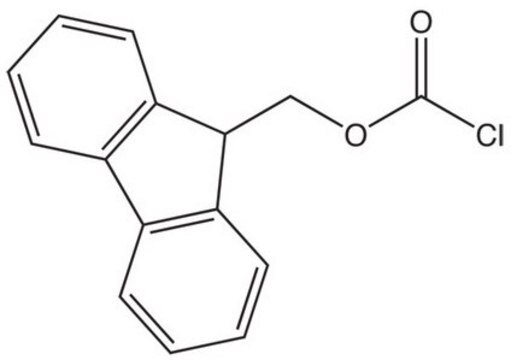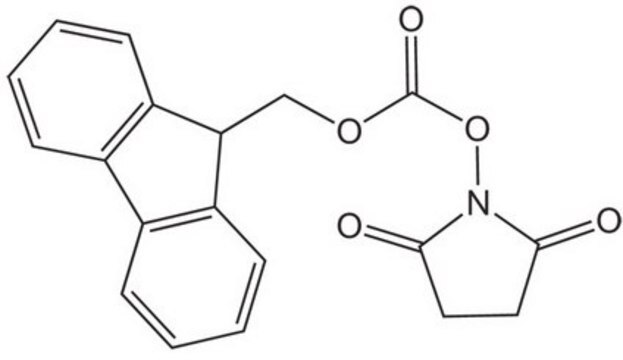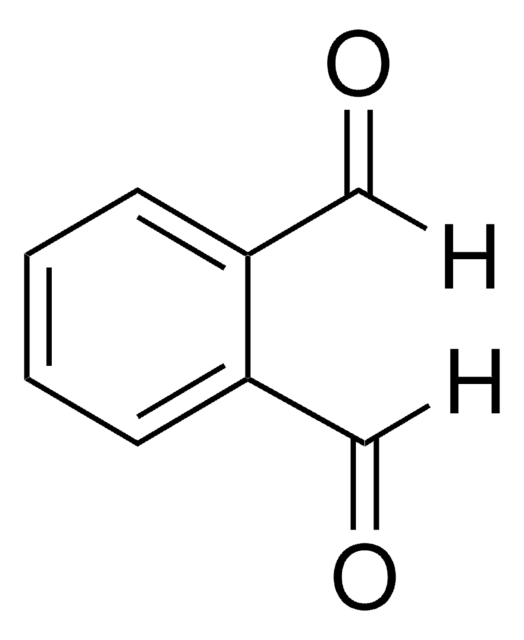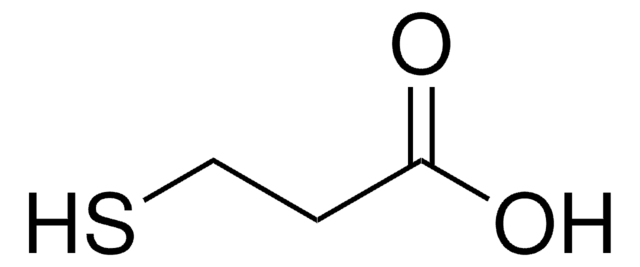8.18203
(9-Fluorenylmethyl) chloroformate
for synthesis
Synonym(s):
(9-Fluorenylmethyl) chloroformate, Chloroformic acid 9-fluorenylmethyl ester, FMOCCl
About This Item
Recommended Products
Quality Level
form
powder
mp
60-63 °C
application(s)
peptide synthesis
storage temp.
15-25°C
InChI
1S/C15H11ClO2/c16-15(17)18-9-14-12-7-3-1-5-10(12)11-6-2-4-8-13(11)14/h1-8,14H,9H2
InChI key
IRXSLJNXXZKURP-UHFFFAOYSA-N
General description
Application
- (9-Fluorenylmethyl) chloroformate can be used as a coupling reagent.
- In the synthesis of amino acid esters. Fmoc chloride activates the carboxylic acid group of the amino acid, allowing it to react with an alcohol to form the ester.
- In the preparation of lysogangliosides.
- In the solid-phase peptide synthesis of DOPA-containing peptides.
Signal Word
Danger
Hazard Statements
Precautionary Statements
Hazard Classifications
Eye Dam. 1 - Skin Corr. 1B
Supplementary Hazards
Storage Class Code
8A - Combustible, corrosive hazardous materials
WGK
WGK 3
Flash Point(F)
Not applicable
Flash Point(C)
Not applicable
Certificates of Analysis (COA)
Search for Certificates of Analysis (COA) by entering the products Lot/Batch Number. Lot and Batch Numbers can be found on a product’s label following the words ‘Lot’ or ‘Batch’.
Already Own This Product?
Find documentation for the products that you have recently purchased in the Document Library.
Customers Also Viewed
Our team of scientists has experience in all areas of research including Life Science, Material Science, Chemical Synthesis, Chromatography, Analytical and many others.
Contact Technical Service
